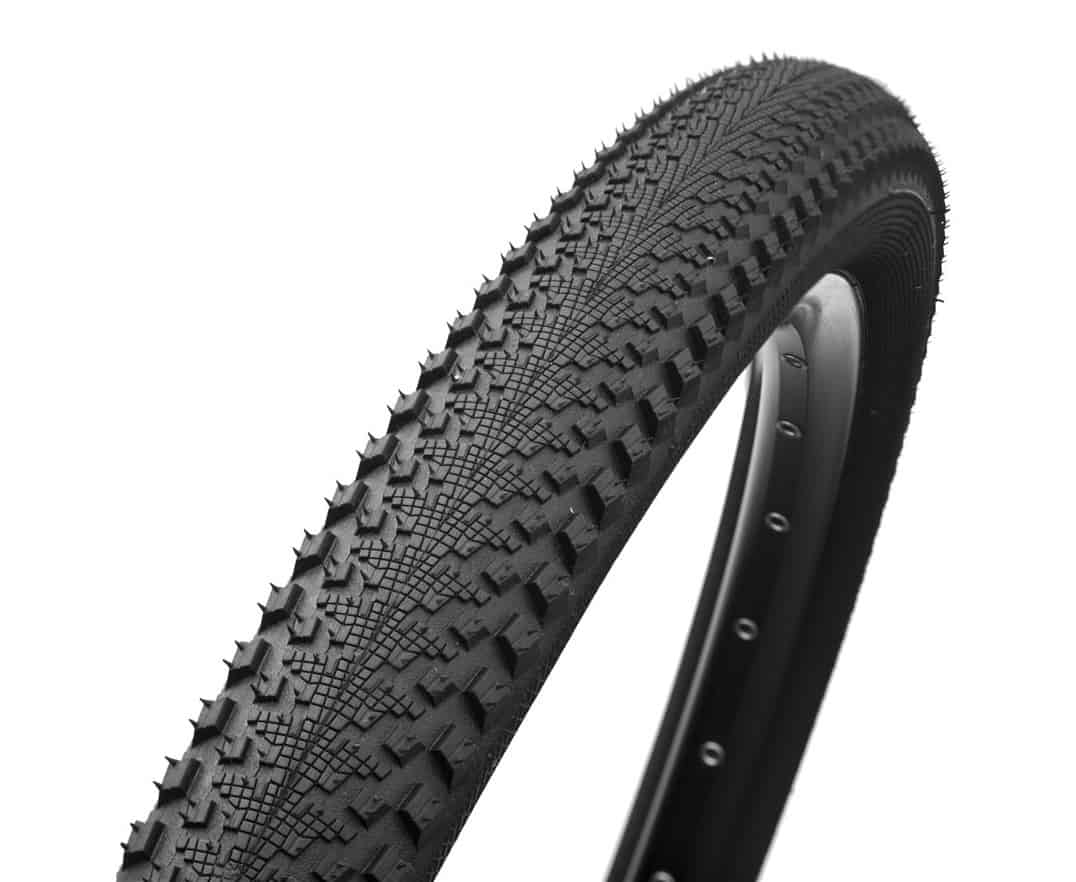- Trek Fuel Ex 5 Review and Buying Guide - September 12, 2022
- Best Trek Mountain Bikes - September 12, 2022
- Best Marin Mountain Bikes: Which Model is Right for You? - September 12, 2022
The correct (MTB) mountain bike tires can make a world of a difference, especially when you’re facing an uphill challenge. But the fact of the matter is unless you’re an expert, many cyclists may not immediately know the difference between 29er vs 27 5 tires.
Perhaps nowhere is it as evident how important the areas of the correct tires during especially challenging and technically difficult courses, such as the annual Park City Point to Point. The race, which has a reputation as one of the most demanding in the nation, is especially taxing, consisting of seventy-five miles on a single track with elevation at points reaching as high as six to nine thousand feet.
One cyclist, Rob Reed, contributor for Forbes Magazine, went so far as to take the step to have his bike custom made. It was important for him to have the bike built in a way that would endure the most difficult conditions–and that consisted of fitting it with specialized carbon XC wheels, which proved not only to be especially light but able to withstand exceptionally rocky, demanding terrain and steep uphill climbs.
But where does tire size, like 29er vs 27.5 come into play? While it may not seem like much of a stress to consider the general make of a tire as important, some may doubt that tire width could make that big of a difference.
The truth is, whether you’re entering a challenging mountain bike race or just riding on your own, a 29er vs 27.5 tire can make a difference in terms of efficiency, performance, and even overall safety.
In this article, we’ll tell you what you need to know to select the correct mountain bike tires for you. We’ll also discuss the differences between 29er vs 27.5 mountain bike tires, so that you know which one to select, and when.

Table of Contents
What are the main causes of mountain bike accidents?
While some have asserted the additional challenges and risks of downhill biking, the truth is many accidents come as a result of patterns that can be fixed.
The first notable mistake is simply pushing limits too far. Tackling a technically difficult trail is part of mountain bike culture, but if you’re a novice, it’s best to stick with smaller trails you are more knowledgeable of, and work your way up. Now, there are some novices even starting out with indoor mountain bike workouts to get their feet wet.
Another step beginners can take is to make sure they are well acquainted with road cycling first. While of course there are some notable differences between road and mountain bike cycling, starting with road cycling will allow you to master basic bike riding techniques, fundamental to any mountain bike riding, and in a safer way to learn.
Other causes of accidents include:
- Riding in the dark, or during adverse conditions
- Taking unknown trails alone
- Not being prepared with safety equipment
- Not performing safety checks on a routine basis. This includes checking the pressure on your tires, adjusting the fit of your helmet; making sure you’re wearing proper mountain bike shorts and cycling shoes; checkering gears and general bike controls; and equipping your bike with the correct tires for the terrain and intent
Are different tires really all that different?
Why is it so important I select a certain kind? Whether you’re road or mountain biking, or even just biking on a recreational basis, the correct tires can play a significant role in overall performance. In fact, the proper tires:
- Allow you to ride with more efficiency
- Have proper traction, suited for the terrain
- Will prove more durable, saving you money in the long run
- Can reduce accidents and injuries
- Can protect against terrain specific elements
Besides size, what else do I need to consider when selecting the best mountain bike tires?
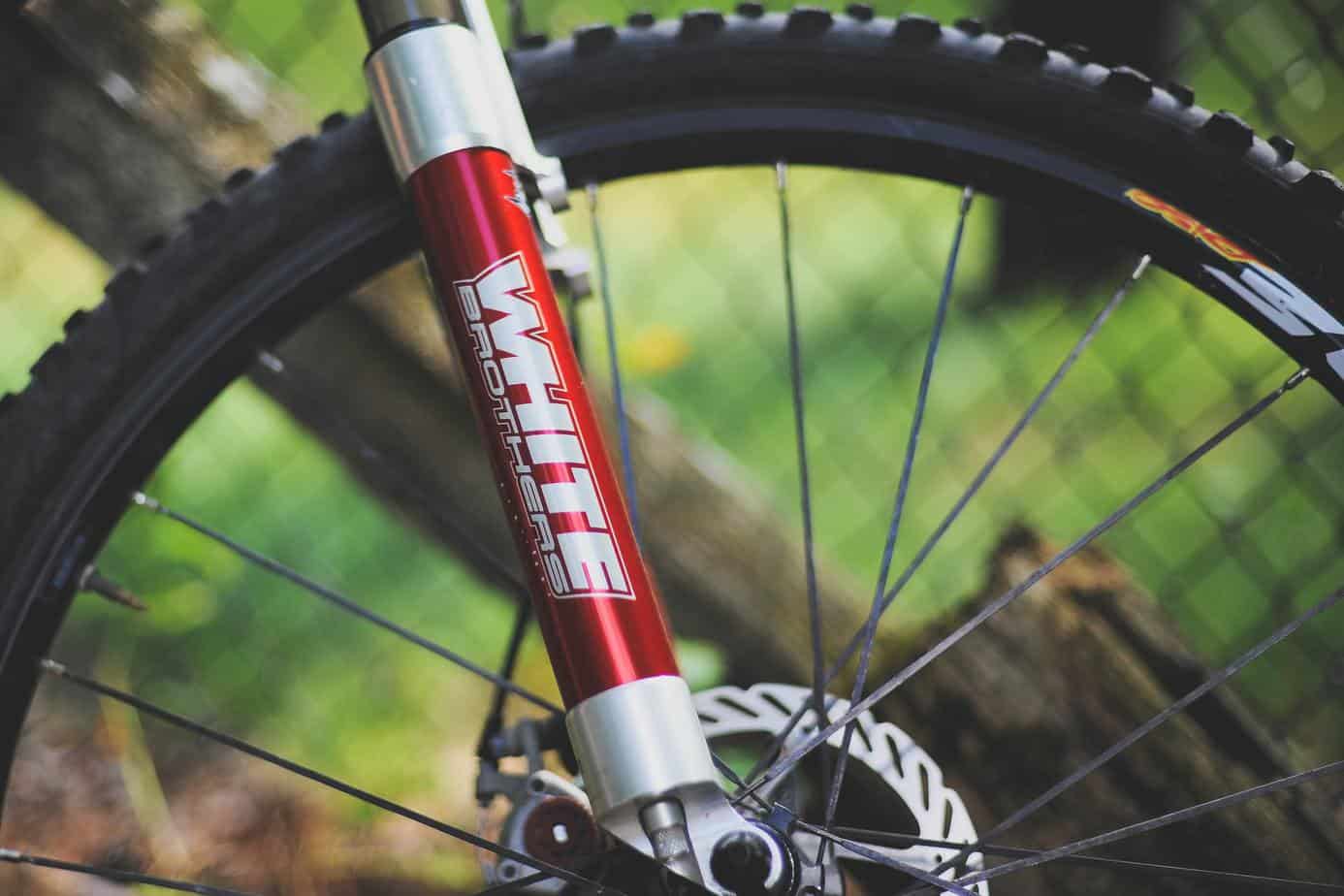
Before we investigate 29er (650b wheels) vs 27.5 mountain bike tires, let’s take a look at other factors you’ll need to consider. Those factors include:
- Tire tread
- Beads
- Weight
- Threads per inch
- Tire compound
- Tire brand
- Tubeless or tubed
- Additional features, such as puncture resistance
- Personal preference
If this sounds like a lot, it’s really not as difficult as it seems. Let’s take a look at each of these factors, and finally, tire width.
What tire tread do I need for mountain biking?
Tire tread depends largely on what terrain you plan to bike on. The first thing you’ll notice is that most tires will not have specific information as to what materials were used, but most tires and made from the same general mix of ingredients, which include natural or synthetic rubber, silica, wax, sulfur, and some form of antioxidants.
You don’t need to know this, or any technical definitions to select the correct tire tread. Simply look at the lugs, or pattern on the tires:
Knob size
Also referred to as lugs, these are the ‘bumps’ on tires and a huge component to the tire tread.
- Low Profile knobs are small, closely packed, and not very raised. These are most suited for road biking, or hard surfaces, roll quickly, but cannot brake as quickly.
- Medium Profile is a bit more raised, and more useful for some off-road biking, as there is an increased grip for softer surfaces and more braking.
- High Profile is the most raised, and should also include side grip for rounding corners. These are your best option for mountain bike tires.
- Knob spacing: The more closely packed, the least suitable, as these are intended for hard surfaces. Look for wide spacing, as those tires provide more grip for elements such as mud, uneven terrain, rocks, and more.
What do I need to know about tire beads?
Tire beads refer to the components that keep a tire stabilized along the rim. The cheapest variety of beads is normally made of steel, while more expensive varieties are typically made from some form of synthetics.
Flexible beads or beads made with synthetic materials are both easier to replace or lightweight, though not essential to mountain biking, so it’s up to you whether or not it’s worth the additional cost.
How heavy or light should my tires be?
Shopping for mountain or road bike tires, whether it’s 29er vs 27.5 tire or even a different size, is different in terms of other bike tires in that lighter is not always better. Mountain bike tires will naturally be heavier than other tires. In fact, there’s been a trend for mountain bikes themselves to become heavier, adding new technology meant to withstand difficult conditions.
When it comes to mountain bike tires, don’t worry too much about weight, but think of matching the weight in proportion to the rider profile or the bike itself. Look at all other factors first before weight.
What about threads per inch?
Many experts suggest thinking about bike tire threads per inch the way you might think of thread count for bed sheets. The casing, or exterior, protective layer on a tire, is rated by thread count. However, in the case of mountain bike tires, higher TPI is not better.
- High TPI, which is something around one hundred and twenty, tend to be lightweight, easy to maneuver. The issue is, while excellent for road biking, these tires do not hold up well the difficult terrain and conditions.
- Low TPI, or around sixty, is more ideal for mountain biking. A lower thread count per inch tends to be made of materials that are heavier and sturdier. They are more suited to especially muddy or messy conditions. For especially difficult conditions, sometimes these low TPI are configured in layers.
What is the tire compound, and why is it important?
The tire compound is made almost exclusively out of rubber, and are focused on providing grip, resistance, but also help your tires roll.
- Soft compounds provide the best gripping features
- Hard compounds are more durable and roll more easily
- Dual compounds are your best option. You’ll get a balance of gripping technique, rolling and durability. Look also for extra rubber on the sides of the tire, which provide extra grip for navigating difficult turns you’ll face while mountain biking.
How do I select the best mountain bike tire brand? When it comes to tire brand, it’s somewhat up to a matter of personal preference. However, you can do some research, by looking for brands that are known to have a good track record in the specific industry. Some well-known names include Maxxis, Goodyear, Michelin, Schwalbe, and Kenda.
Do I want a tubed or tubeless tires for my mountain bike?
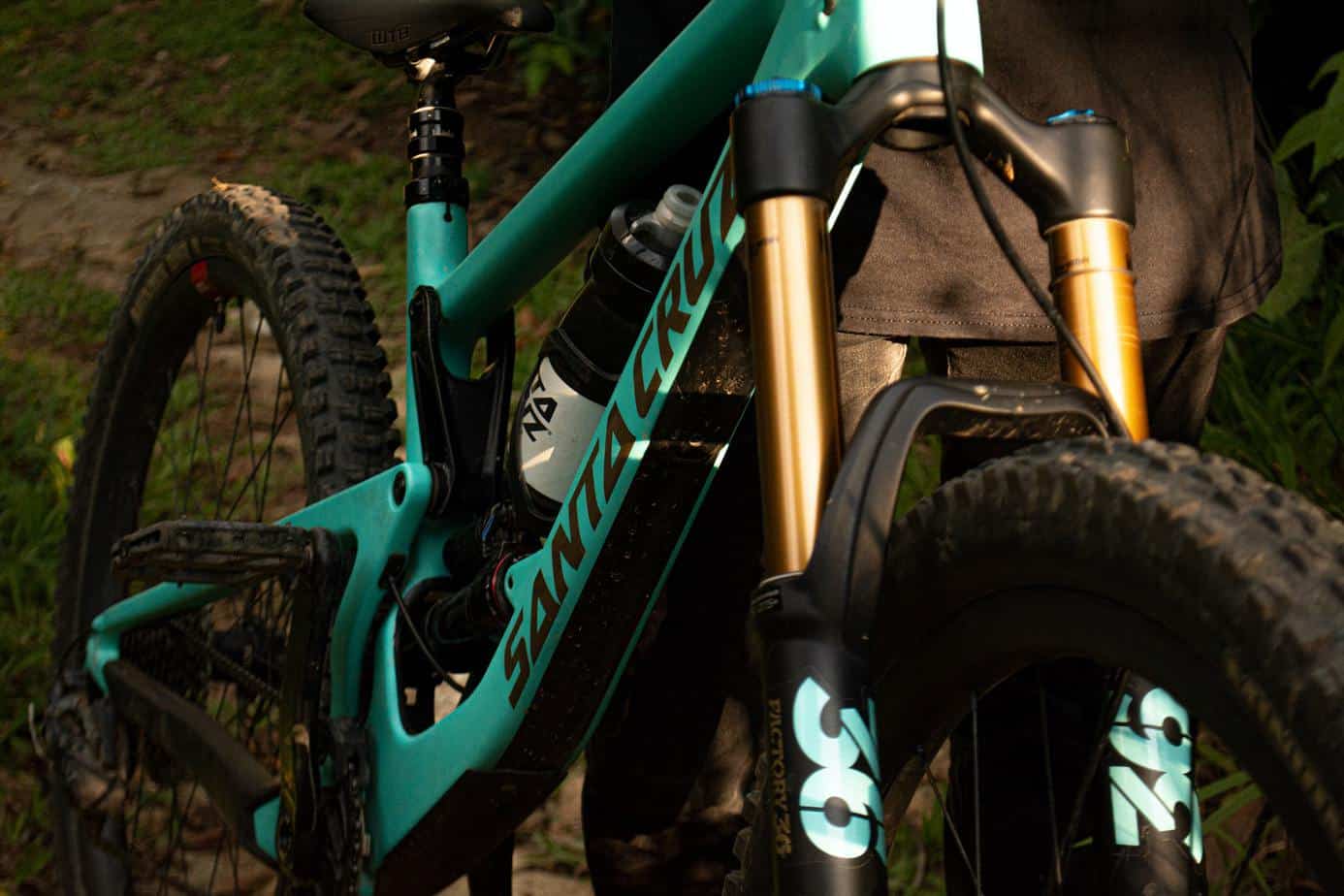
Tubeless tired have risen in popularity, not only among competitive racers but also among recreational mountain bikers. Here’s how it works: normally, bike tires have a tube to provide structure. Tubeless tires, which you’ll actually find in cars, have the bead snapped into the rim. The rim and stem also need to be tightly and professionally sealed.
You can either buy tubeless mountain bike wheels, or transition to tubeless wheels, though you might find it easier to buy the wheels tubeless.
Tubeless wheels have these advantages
- More lightweight–by some estimates, tubes can way up to a few hundred grams
- Less damage–the issue with tubed tires is that they more easily tear or become pinched.
- Improved traction and ease turning corners
However, tubeless wheels tend to be more expensive, must be done well and properly sealed, and maybe harder to replace or maintain.
As a whole, if you have a bit of extra money to spend, tubeless is a good option for mountain bike tires, especially with less damage and just a bit more traction.
Are there any additional features I might want to look for?
In addition to the other characteristics we’ve already discussed, you also may want to look for wheels with additional puncture resistance, especially if you do anticipate rough conditions.
So what’s behind 29er vs 27.5 wheels?
Now let’s discuss wheel size. When it comes down to the debate between 29er vs 27.5 wheels, it comes down to your style of mountain biking, as well as anticipated conditions. Let’s take a look at what the debate is all about, and which one makes the most sense for you:
Have you already purchased a mountain bike?
If you have, this of course will be a no brainer; you must select the tire that fits your wheel size. If you’ve already selected your mountain bike, try not to worry too much. It’s not worth an upgrade; just make sure you follow all of the other instructions in order to purchase the best wheel possible.
Are 29er and 27.5 the only wheel options?
Technically, no. What has happened over the last many years is that 26 wheels were replaced in favor of 29er and 27.5 wheels, so now these are the two most popular options.
Is 29er vs 27.5 the better wheel size?
In terms of wheel size, one is not inherently better than the other. That said, there are advantages and disadvantages to one size vs another.
Does a 29er vs 27.5 wheels have more traction?
Traction, as you know, is absolutely critical in mountain biking, not only for navigating difficult terrain but also more especially mucky conditions. The good news is that both 29er and 27.5 wheels offer reasonable traction.
That said, a 29er is going to provide better traction. The larger wheel size is especially apt for navigating slick rocks and uneven terrain you may come across, due to the larger area of lugs that are able to grip onto a slightly larger swatch of terrain at a given time. This is best if you see yourself biking in areas that are especially rough and may not be well cleared.
If I care most about being able to ride around tight spaces or corners, which is the better option?
29er and 27.5 both offer enough maneuverability for mountain biking, but as you might guess, the smaller wheel size wins out. If you plan on riding mostly open trails, this may not be a concern, but if you prefer especially challenging and tortuous paths, you may find yourself more pleased with a smaller 27.5 wheel size.
What about rolling motion/rolling resistance?
Rolling motion, or the ability to easily bike over different terrains, and a smooth ride overall is always a concern. The larger 29er wheel is more able to quickly roll over terrain and obstacles, and even larger items such as planks or logs. Of course, fairly cleared paths do just fine with 27.5 wheels; 27.5 wheels can easily pass over smaller obstacles.
Will one help me ride quicker than the other?
When we’re asking about speed, we are actually instead asking about the rate of acceleration. Just as a reminder, speed refers to distance covered over a period of time, while the acceleration is instead the rate of how quickly you can change your speed. The smaller 27.5 wheels will accelerate more quickly, as lighter as smaller objects do. However, that does not mean you will be going ‘slower’ with a 29er.
Can you summarize the main differences between 27.5 vs 29er wheels?
When it comes to 29er vs 27.5 wheels, the difference is in what you value you most, as well as your biking habits.
- If you value lightweight, easy to use, and flexibility, go with a 27.5. The smaller wheel size is easier to maneuver, perfect for navigating winding trails, and overall user friendly.
- If you’re looking for extra traction and grip, choose a 29er. A 29er will prove more stable and safer on especially rugged terrain. While not as apt for tight turns, the steady grip and traction will allow you to pass over the most difficult conditions.
Can you recommend any 29er and 27.5 wheels?
Now let’s take a look at some of the best 29er and 27.5 wheels on offer. Keeping in mind not only the advantages and disadvantages to 29er vs 27.5 wheels but also how to select the best wheels for mountain bikes, let’s take a look at a few you may consider.
For 27.5 wheels, try
Michelin Wild Enduro Tire – 27.5 x 2.4, Tubeless, Folding, Black, 60tpi
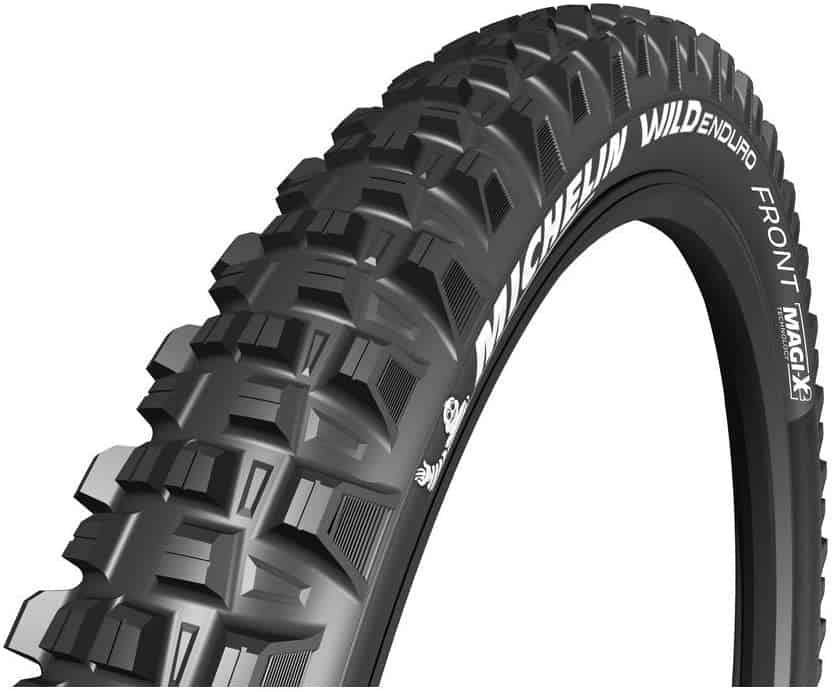
This wheel is tubeless, making for a more durable but still lightweight and easy to maneuver option, while the low TPI provides additional traction. The tread pattern is specifically made to be used on multiple kinds of terrains, and the folding tire bead is another great feature.
Competition ready rear-wheel mountain bike tire provides superior traction at any speed. Rear-wheel specific tread pattern provides more speed, outstanding performance, and maximum progressivity.
Continental Double Fighter III Urban Mountain Bicycle Tire – Wire Bead
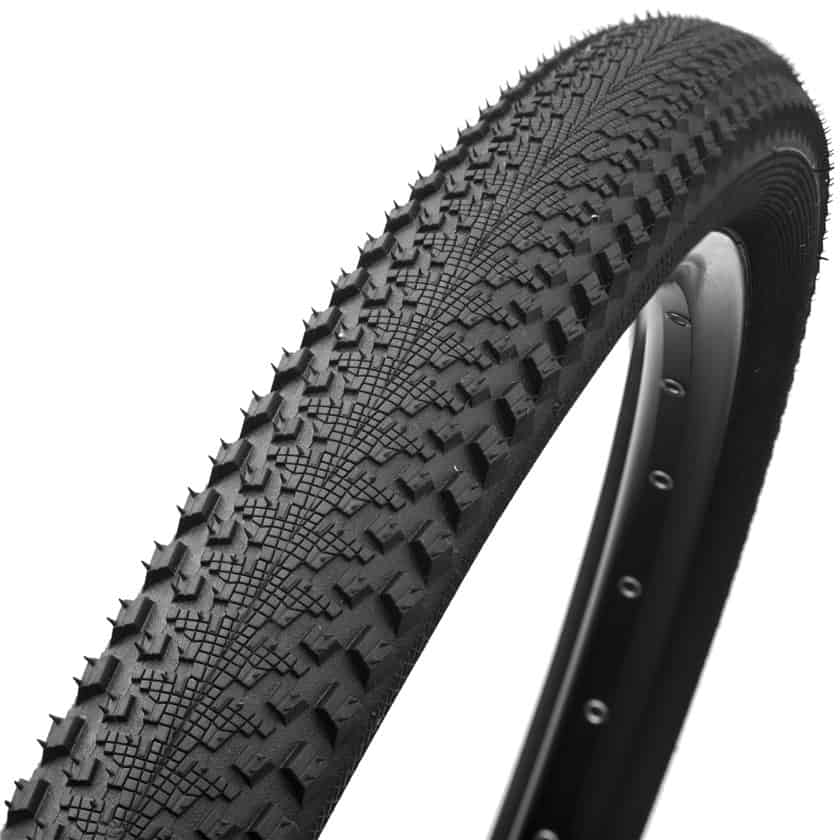
This 27.5 option from Continental is also another great tire in terms of versatility, as you can ride on gravel, asphalt, and rougher trails. The knob design provides some stability, while these tires are lithe and able to make tight turns. The casing is designed to last.
These tires are the perfect fit for that older mountain bike that you now choose to jump on to get around town. Perhaps it is your go to commuter rig and the best way to work includes pavement and dirt.
For 29er wheels, try
Maxxis Ikon
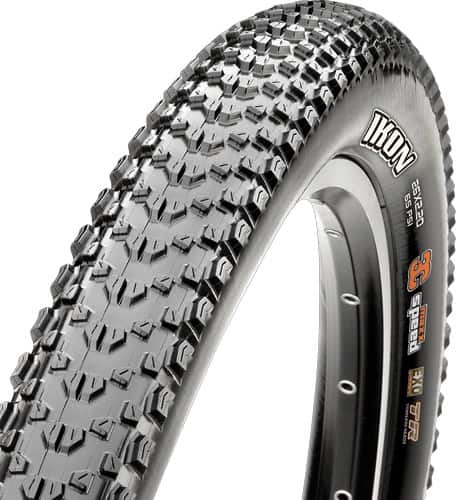
From Maxxis comes a substantial 29er wheel that is surprisingly lightweight and rolls well, even with the benefits of added traction, providing a nice compromise between stability and maneuverability. The special triple compound provides grip and the ability to navigate turns with more ease than some other 29er models.
A lightweight high-volume racing tire, the Maxxis Ikon 3C EXO TR mountain bike tire features 3C triple compound construction that gives excellent grip for ripping across rugged terrain on your 29er.
WTB Vigilante Tire – 29 x 2.5, TCS Tubeless, Folding, Black, Light, High Grip
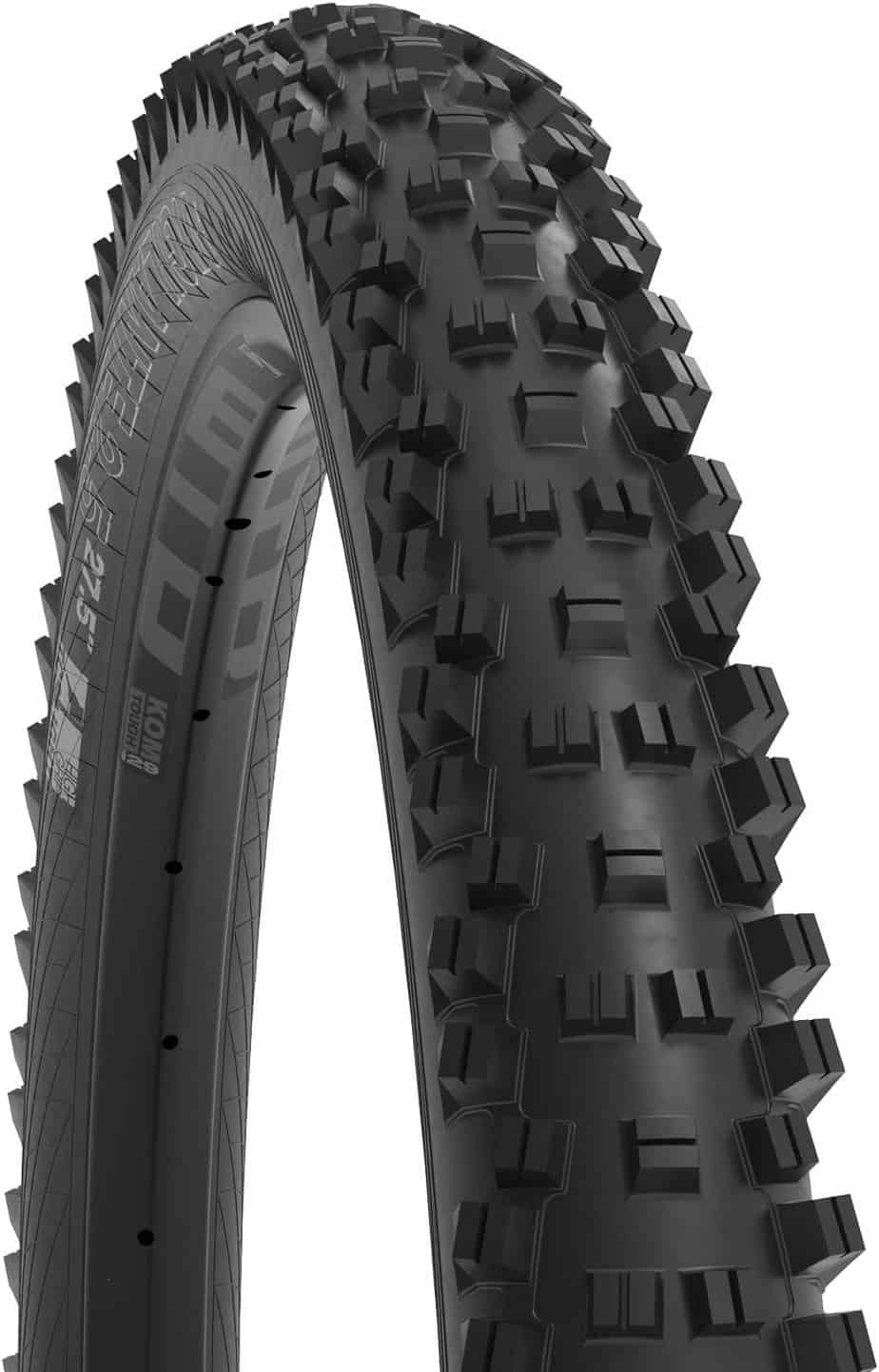
Want a 29er with some great features? Consider this option. This all-mountain tire is meant to withstand the toughest conditions and even poor weather conditions. This is indeed a fatter tire with dual rubber, tubeless folding design, powerful grip technology, and overall durability makes this a nice option.
The entire tread pattern is supported by a base of high durometer rubber, which also transitions halfway into the height of the knobs and allows for the use of softer knob compounds without the tire folding due to cornering forces.
FAQs About 29er vs 27.5 Mountain Bike Tires
29ers are wider tires that are excellent for open terrains and they provide better stability and have better control when climbing or cornering on rough terrains.
29” tires are the same rim diameter as 700c, however, sometimes the 29” tires might not be the perfect fit for a 700c road rims as they might be too wide.
There are two different plus sized tires that are marked with 27.5 and 27.5+. The only difference between these are their size, so the 27.5 tire is 2.0 – 2.5 inches wide, whereas the 27.5+ tire is 2.8-3.0 wide.


